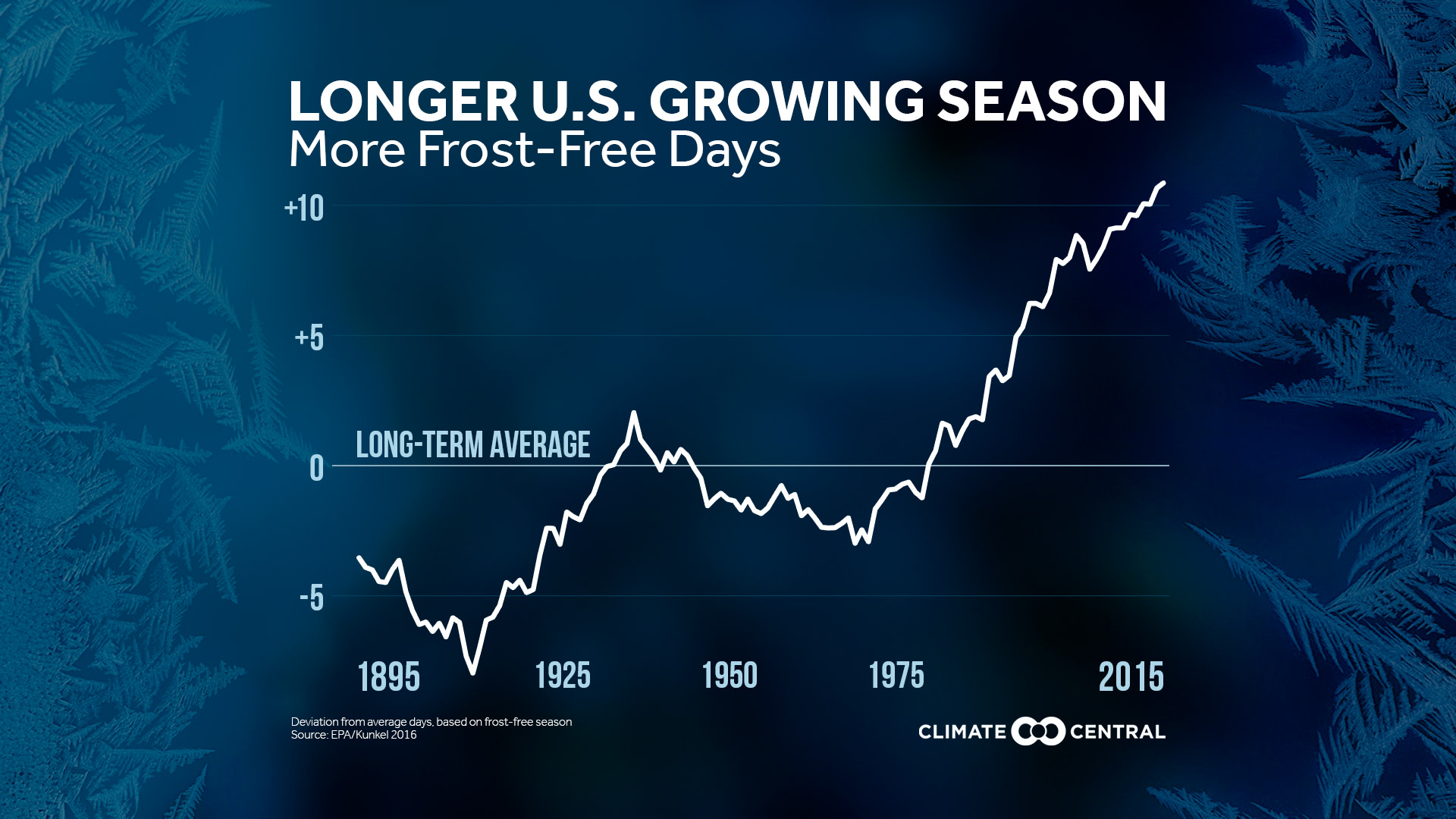Coming off of a warm September, warmer falls are becoming a trend across the U.S., with the first freeze (temperature below 32°F) of the season arriving later than before. This trend is not limited to one area of the country. The first freeze is coming a full month (31 days) later in Boise, Idaho, 27 days later in Las Vegas, Nevada, and 24 days later in Tupelo, Mississippi.
We have previously looked at the date of the last freeze for cities across the U.S., which was trending earlier for many. Between the last freeze happening earlier and the first freeze coming later, the growing season — or the frost-free season — is extending on both ends.
According to the EPA, the growing season is now nearly two weeks longer on average across the U.S. compared to the beginning of the 20th century. While this may delight warm-weather lovers, warmer overnight temperatures can reduce productivity and quality of grains and fruits, which might increase their costs at the supermarket. Warmer average temperatures lead to an increase in the frequency of extreme temperatures, which can shift the geographical areas where certain crops have historically grown best, potentially causing problems for farmers. Warmer temperatures could also prevent necessary plant-pollinator interactions from occurring, due to the potential shift in ecological cues, which would affect the delicate balance between species. Going longer without a frost also means that more pests survive into the winter to damage or destroy crops.
An extended frost-free season also means a longer allergy season, as well as a longer season for mosquitoes and ticks, potentially creating public health problems. As greenhouse gas emissions continue to rise, this frost-free trend will likely contribute even more detrimental health and agricultural effects across the U.S.
METHODOLOGY: Locations without a consistent freezing season (defined as fewer than 15 annual nights of sub-freezing temperatures) were excluded from the analysis.
